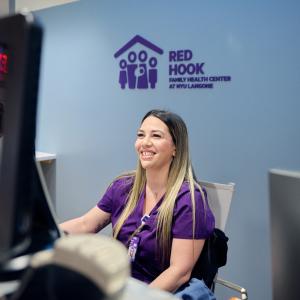
Dr. Stephen Ross
Photo: Karsten Moran
In February, the federal government announced it would seek more than $1.1 billion to fight the spiraling epidemic of prescription painkiller abuse. Today, more than 2 million Americans are dependent on or abuse prescription opioids, a widely prescribed class of painkiller that includes oxycodone, hydrocodone, and morphine. In 2014, overdoses from such drugs killed an estimated 14,000 people in the U.S.—triple the number in 1990. Stephen Ross, MD, director of Addiction Psychiatry at NYU Langone’s Tisch Hospital, and director of the Division of Alcoholism and Drug Abuse and the Opioid Overdose Prevention Program within the Psychiatry Service of Bellevue Hospital Center, shares his thoughts about this unprecedented epidemic and its link to a resurgence of heroin addiction.
What’s Behind This Alarming Trend?
In 2001, The Joint Commission on Accreditation of Healthcare Organizations issued its pain management standards, which propagated the notion that pain is a “fifth vital sign.” It required healthcare providers to ask every patient about their pain, since the perception at the time was that pain was undertreated. This led to the unintended consequence: prescription opioids went from a treatment of last resort to a first-line therapy for chronic, nonmalignant pain syndromes. Yet there was little or no evidence that long-term use of opioids could successfully manage pain in this patient population. In the late 1990s, pharmaceutical companies had begun to aggressively market opioids for pain, downplaying their addictive liability. Because doctors typically have minimal training in addiction, many began to prescribe opioids to treat chronic pain syndromes without screening for current addiction or risk factors associated with opioid addiction. Soaring prescriptions for opioids have caused an alarming increase in the incidence of addiction, treatment for addiction, and overdose fatalities. Today, opioids are the most commonly prescribed class of any medication. The other big issue is perception. When heroin is essentially packed into a pill, made and marketed by a pharmaceutical company, prescribed by a physician, and dispensed by a pharmacist, it doesn’t seem so dangerous. But the brain doesn’t differentiate heroin from a prescription opioid.
How Have Prescription Opioids Fueled the Rise in Heroin Abuse?
Someone who becomes addicted to a prescription opioid needs to keep taking more and more of the drug to relieve pain or get high and prevent withdrawal symptoms. But these are controlled substances that are legally available only by prescription, and they’re expensive. To an addict, heroin offers an attractive alternative. It’s very cheap and more potent than just about every prescription opioid, with the notable exception of street fentanyl, which is alarmingly becoming an opioid epidemic in and of itself. From 2010 to 2012, the mortality rate from heroin overdose doubled in 28 states.
So How Do We Combat These Intertwined Epidemics?
By developing abuse-resistant painkillers and creating more prescription-monitoring programs. Our biggest weapons, though, are public education and professional training. The recent CDC guidelines around opioid prescribing, and the involvement of the White House in combating opioid addiction are very important developments. Addiction is arguably the number one public health threat in the U.S., in terms of prevalence, morbidity, mortality, and societal cost. Very few physicians receive adequate training in addiction prevention and treatment. I’m proud to say that this is one of our areas of expertise at NYU Langone and that we offer fellowship training in addiction psychiatry. Only recently have hospitals begun to routinely screen for addiction and help people obtain proper care. This policy shift should help change behavior, but it will take time.

